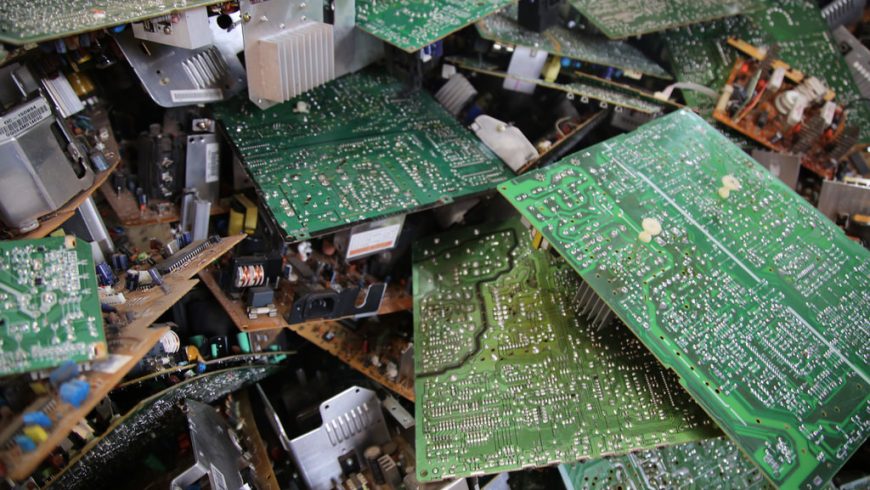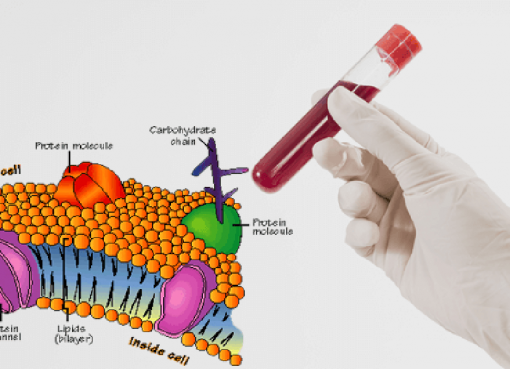Pollution is the introduction of contaminants into the natural environment that causes adverse changes. The highly dangerous source of pollution of the environment of the present day is electronic waste (e-waste), originating from electrical and electronic equipment. Our society has the most crucial role to play to combat this menace of the modern world.
The technical processes of electronic products have polluted the environment and disturbed the natural balance of the ecosystem by increasing carbon footprint. The consequences involved with the life of the products are similarly dangerous to nature and to the biological world. This is our responsibility to protect the environment and conserve natural resources from this serious threat of irreversible changes due to e-waste pollution. Pollution caused by e-waste can be minimized by educating the society, for which we must know what are the waste and the e-waste.
The Basel Convention (1989) defined that wastes are substances or objects, which are disposed of or are intended to be disposed of, or are required to be disposed of by the provisions of national laws. In our daily life, we create different kinds of wastes from various sources. The wastes generated by household are the municipal waste, which usually consists of organic waste, plastic, paper, metal, glass, etc. The healthcare providers like hospitals, nursing homes, healing centres, etc. produce biomedical wastes consisting of sharp items, organic wastes, drugs and other discarded chemicals of microbiological and biotechnological processes. End-of-life substances like packaging materials, tyres, plastic items, furniture and vehicles are also the source of waste. In the long run, all these wastes pose as hazardous to public health and environment as they are toxic, infectious, poisonous, explosive, corrosive, reactive and ignitable.
Electronic products are integral part of our lives, significantly changing our life styles providing comfort, security, immediate information and ease to do some important daily works. Our society is also changing with changed life styles of the people. All wastes sourced from electronic and electrical appliances after their original intended use are electronic wastes or e-wastes such as computer and its accessories (central processing unit, keyboard, monitor, LCD-liquid crystal displays, printer, mouse, compact disc, floppy disc), televisions (light emitting diodes, LED TV and Plasma TV), remotes, phones and chargers, i-pods, head phones, air conditioners, refrigerators, washing machines, microwaves, mixer-grinders and other appliances.
Composition of e-waste is multifarious and broadly categorised into ‘hazardous’ and ‘non-hazardous’. Again, e-waste consists of ferrous and non-ferrous metals, glass, wood, ceramic, rubber, plastic, concrete etc. Along with copper and aluminium, some precious metals like silver, gold, chromium, platinum, palladium, Polybrominated biphenyls (PBB) and polychlorinated biphenyls (PCB) are the most toxic compounds found in e-waste. Plastic made from polyvinyle chloride generates two persistent organic pollutants, namely polychlorinated dibenzo-p-dioxins (PCDD) and polychlorinated dibenzofurans (PCDF). E-waste, which becomes hazardous in nature beyond threshold level, makes natural resources severely polluted.
The electronic manufacturing industry has emerged as one of the most innovative industries in the present scenario. Almost every day new electronic products are flourishing in the market influencing consumption pattern. The short life span of the products, higher technology, availability of choices, rapid urbanization, affordability of the consumers place the electronic industry at the top of the world business. It is often cheaper to purchase new items than to repair or upgrade the used, old and broken ones. This has resulted in an increased amount of e-waste. We discard the electronic items as garbage with municipal waste or simply get rid of them without being processed for recycling to the immediate environment, by throwing them to near water source, keeping or burying them into the soil.
E-waste is associated with sever health risks. Direct exposure to harmful materials results in irreversible and detrimental health consequences. For example, children and adults exposed to direct burning of cables retain copper and inhale toxic fumes to become victims of respiratory ailments. Unsafe recycling activities at home and dumping sites affect almost every system of human body as, people are exposed to toxic components – mercury, lead, barium, cadmium, chromium, arsenic, beryllium, lithium, polybrominated flame retardants, PCDD, PCDF etc. Long term exposure of these chemicals leads to irreversible damage of immune, nervous, reproductive, endocrine and digestive system. These chemicals are known to cause health risks like cancer, lung cancer, miscarriage, alteration of liver function, derma chloracne, diarrhoea, convulsion and even death.
Now-a-days, we are bound to produce e-wastes as we live in an so-called up-to-date society revolutionised by Information and Communication Technology. But, as a consumer, we must be concerned about every detail of the product we purchase. It is our responsibility to know the impact of our purchases specially the negative consequences attached therein. As a consumer of electronic goods, we can choose products with strong take-back policies. We can join organisations that campaign proper disposal of e-waste. For example, Attero and IFC (International Finance Corporation), a programme named as clean e-India, collect e-waste from home and corporate sectors against payment and recycle/dispose following eco-friendly methods. Attero Recycling is an Indian e-waste recycling company at Noida that produces 18,000 metric tons of e-waste annually and is growing by 20% annually. The company extracts precious metals such as gold, platinum, palladium etc. from e-waste. In 2013, the company processed one thousand metric ton of e-waste per month from about 500 cities of India and made a profit of $15 million (Timmons, 2013). Likewise, Ultrust Solutions (I) Pvt. Ltd of Chennai, Earth Sense Recycle Pvt. Ltd of Chennai, Cereba Integrated Technologies Ltd. of Banglore, A2Z Group of Gurgaon, Green Scrape Eco of New Delhi, ReGlobe of Faridabaad and Ecoreco of Mumbai are a few names of companies coming up to meet e-waste crisis in India.
The most potential source to solve the e-waste crisis in a significant manner is the corporate sector that can directly minimize the digital dump and counter e-waste issues. As bulk consumer, the corporate sector should purchase the higher quality products that last longer and can be repaired and follow the proper methods of recycling the products once discarded. The computation sector initiates Green Information Technology (Green IT) campaign that directly or indirectly addressed environmental sustainability for a better future.
The devastating effect of e-waste highlights the need to have strong policies and implementation of regulatory mechanisms. The citizen must have sufficient legal rights to take action for damages caused by e-waste to their health, property, environment and society.
The Indian Government has taken up a number of initiatives to address the issues related to e-waste management and environmental pollution. ‘The Environmental (Protection) Act, 1986’ namely EPA was enacted as the first comprehensive environmental law in India as a commitment under the ‘Stockholm Conference, 1972’. For implementation of the objective of EPA about hazardous substances, ‘The Hazardous Waste (Management and Handling) Rules’ were enacted in 1989 which was further amended in 2003. The e-waste is defined in ‘The Hazardous Waste (Management and Handling) Rules, 2003’ as waste of electrical and electronic equipment including all components, subassemblies and their fractions except batteries. There is a separate regulation for batteries as ‘Batteries (Management and Handing) Rules, 2001’.
To have an appropriate mechanism about export and import of e-waste, ‘The Hazardous Wastes (Management, Handling and Trans-boundary Movement) Rules, 2008’ was enacted. The Ministry of Environment and Forest is the nodal ministry to grant permission for transit of hazardous waste in/from/through any part of India. Moreover, the ministry constituted a Coordinated Committee with representatives from the Ministry of Finance, Ministry of Commerce and Industry, Ministry of Shipping, Central Pollution Control Board, State Pollution Control Board and experts. The 2008 Rule also emphasised the concept of Extended Producer Responsibility (EPR). The EPR is a strategy for environment protection that makes the manufacturer responsible for entire life of the electronic product. Here, the manufacturer’s responsibility is extended to post-consumer stage, concerning take back, proper recycle and final disposal of the product.
To honour the public interest in enabling the recovery and/or reuse of useful materials from e-waste of electronic products, the Government passed ‘The e-waste (Management and Handling) Rule, 2011’. Reduction in the use of Hazardous Substances (RoHS) and provision of information about the constituents of the electrical and electronic equipment in the product information booklet are the notable inclusion in the Rule.
The Ministry of Environment, Forest and Climate Change has notified ‘the E-Waste Management Rules, 2016’ in suppression of ‘The e-waste (Management and Handling) Rule, 2011’ where norms have been made more straight and it reflects the Government’s commitment to environment governance. Moreover, the Compact Fluorescent Lamp (CFL) and other mercury containing lamps as well as other such equipment are under the purview of the regulations. Collection of disposal and its recycles by environmentally sound manner through separate Product Responsibility Organisation (PRO) was ensured.
‘The E-Waste (Management) Amendment Rules, 2018’ was published in the Official Gazette and came into force on 27th March 2018. Regarding RoHS, the CPCB may conduct random sampling of electrical and electronic equipments (EEE) placed in the market to monitor and verify the compliance of RoHS provisions.
In spite of all the efforts made by the Government, the collection and recycling of e-waste is yet to be properly regulated. There is an urgent need to be concerned about irreversible effect of deadly pollution caused by e-waste. Each individual as customer of EEE and the society as a whole can contribute many affirmative impact on proper disposal and recycle of e-waste. A society composed of informed and educated customer can spread the knowledge of pollution caused by e-waste, buyer’s rights, producer’s responsibility and rules and regulations about hazardous substances. Awareness in every corner of the country through radio, newspaper, television, social media, internet, talk, discussion forum etc. can revolutionise the present scenario of the management of e-waste.
Introduction to e-waste courses in education system is the most effective strategy to prepare informative customers. It would help the society to be sensitized about the deadly and irreversible effect of pollution caused by e-waste. E-waste management in India is still unstructured and there is a lot to do on fruitful waste administration for the benefit of the society. To develop a workable model for recycling and scientific disposal, there is a need to assimilate organised and unorganised sectors.
Relationship between technology and society is complex. Realistic assessment of the role of technology in shaping society today is debatable. The power of technology follows its own course apart from any form of social control. Technology could bring paradise on Earth; it seems equally that technology has made itself a culprit/killer of human, plants, animals, microbes and physical environment. It has to be asked whether the technology is an asset or a liability for society.
In India, e-waste management business market is a huge market and growing in a very fastest way. According to a publication of Bussiness Vani on 22nd March 2017, e-waste in India was a 30,000 crores industry which is expected to touch 1,30,000 crores by 2021. There is untapped industry potential in e-waste management sector. The people with low investment can network with organised e-waste disposal units/enterprises. One can do business as collector, dismantler or recycler with professional e-waste processing companies. The United Nations Environment Programme (UNEP) Report on “Recycling- from e-waste to Resources” recognises that the informal/unorganised collection system has been rather efficient in countries like India because the daily informal collectors can penetrate each community and city to collect waste from house to house. They are flexible in terms of working hours and location; they pay a reasonable price to the customers and are in charge of all transportation work. At this point, one can do business as formal e-waste collector by taking advantage of informal collection of e-waste from every corner of the society with minimal input. The final disposal plant by means of proper land filling and incineration unit can be a profitable business.
As an individual of a society, we must take active part in each and every issue related to electrical and electronic waste, and environment. We live in nature that cannot be compensated by a man-made environment. So, it is important to Think Globally, Act Locally, Involve Personally and to be a Green Citizen for a Greener Earth.
DOWNLOAD PDF
Dr. Farishta Yasmin
Associate Professor
Department of Botany
Nowgong College
Assam, India




